Jan Krikke on Jean Gebser and the Chinese Perspective
Jean Gebser's blind spot: The Chinese “perspective”
Summary
The German philosopher Jean Gebser (1905 – 1973) claimed that the invention of linear perspective in the early Renaissance (15th century) represented a new stage in the development of human consciousness. Humans became aware of space. Gebser further argued that Cubism represented the next shift in consciousness, with humans becoming aware of spacetime. Gebser overlooked the fact that the Chinese, in the 11th century, had already developed a “perspective” that integrated space and time. This essay looks at the implications of Gebser's oversight.
In 1949, Jean Gebser published the original German version of his influential book The Ever-Present Origin in which he identified five stages (or “structures”) in the evolution of human consciousness. The book influenced the American philosopher Ken Wilber, the founder of the Integral Movement, who also identified distinct phases in the development of consciousness.
Gebser uses the history of the pictorial arts to illustrate the development of consciousness. Humans first drew two-dimensional drawings on rocks, then images that included the horizon, then pictures with structured space using linear perspective, and then, with Cubism, “four-dimensional” space that he referred to as “aperspectival.”
| Structure | 1. Space and Time Relationship | ||
|---|---|---|---|
| a) Dimensioning | b) Perspectivity | c) Emphasis | |
| Archaic: ("Primal man") |
Zero-dimensional | None | Prespatial Pretemporal |
| Magic: (10 000 BCE) |
One-dimensional | Pre-perspectival | Spaceless Timeless |
| Mythical: (2500 BCE) |
Two-dimensional | Unperspectival | Spaceless Natural temporicity |
| Mental: (1500 CE) |
Three-dimensional | Perspectival | Spatial Abstract temporal |
| Integral: (2000 CE) |
Four-dimensional | Aperspectival | Space-free Time-free |
1 - Gebser's five structures linked to the awareness of time and space
Gebser associated the Mental structure with the invention of linear perspective. Developed in the early days of the Renaissance, linear perspective gave European artists for the first time a geometrical tool to create the illusion of a seamless, continuous 3D space on the two-dimensional picture plane.
The key to the invention of linear perspective was the invention was the vanishing point, the imaginary point on the horizon where parallel lines meet. The vanishing point enabled the artist to create a “coherent” pictorial space. The space in the work of earlier artists, like the Italian master Giotto, was incoherent because it lacked the unifying vanishing point.
Gebser called the invention of linear perspective a key moment not just in art. It was a reflection of evolving human consciousness. He wrote:
Scarcely five hundred years ago, during the Renaissance, an unmistakable reorganization of our consciousness occurred: the discovery of perspective which opened up the three-dimensionality of space. This discovery is so closely linked with the entire intellectual attitude of the modern epoch that we have felt obliged to call this age [i.e. from the invention of perspective to the Modernist Revolution] the age of perspectivity and characterize the age immediately preceding it as the 'unperspectival' age [i.e. Middle Ages, Giotto].
While linear perspective reflected an awareness of space, Gebser argued that Cubism incorporated the factor of time in their work by depicting objects as if seen from multiple perspectives. This led to an awareness of the Fourth Dimension and what Gebser referred to as the “aperspectival.” In Gebser's words:
These definitions, by recognizing a fundamental characteristic of these eras, lead to the further appropriate definition of the [modernist] age of the dawning new consciousness as the “aperspectival” age, a definition supported not only by the results of modern [quantum] physics, but also by developments in the visual arts [Cubism] and literature, where the incorporation of time as a fourth dimension into previously spatial conceptions has formed the initial basis for manifesting the 'new' (i.e. modernism].
Optics
Gebser's account of European art, and especially the modernist revolution, leaves several crucial gaps. The first one is the role of the Japanese woodblock print (Ukio-e) in kick-starting the modernist revolution. The Japanese print played a key role in moving the European pictorial arts away from its optical tradition.
Traditional European art was based on optical principles that emerged in Greece over 2,000 years ago. Greek artists used claire-obscure (the optical effect of light and shadow) to create the illusion of three-dimensionality on the two-dimensional picture plane. The Renaissance invention of linear perspective was a natural progression of this optical approach to the pictorial arts.
Optical representation remained the norm in European painting until the 1860s, when artists in France discovered the Japanese woodblock print. Struck by the visual immediacy of the Japanese prints, modernist pioneers like Monet, Renoir, and Van Gogh moved away from optical representation, starting with the elimination of claire-obscure.
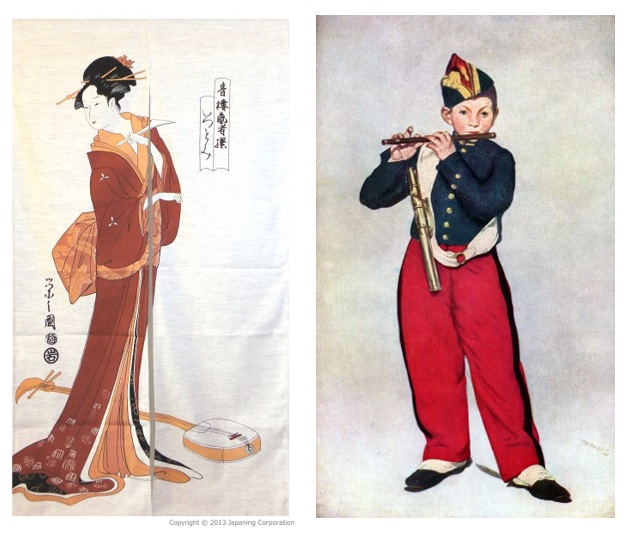
2 - Japanese print (Ukio-e) and Édouard Manet's The Flute Player
Having eliminated the optical effect of light and shadow from their painting, the modernist pioneers, later known as the Impressionists, “deconstructed” linear perspective. Trying to duplicate the visual immediacy of the Japanese print, they suppressed or eliminated the “suction effect” created by the vanishing point, as can be seen in landscapes by Van Gogh and Cezanne.
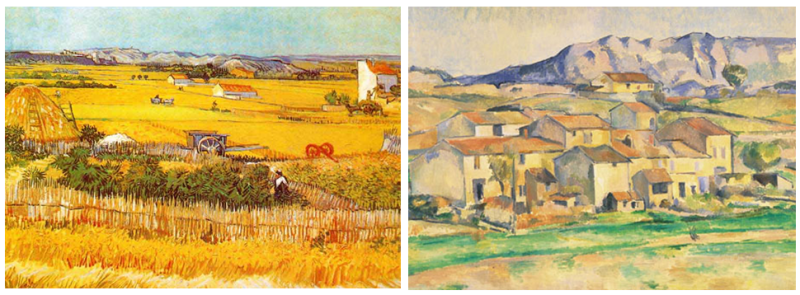
3 - Van Gogh and Cezanne suppressing the suction effect of the vanishing point
Cezanne went a step further in his deconstruction of linear perspective. In his Still Life with Basket, he brought objects in the background forward to the picture plane by making them larger. Moreover, he depicted the objects in the painting as if seen from different vantage points. A diagram by art historian Erle Loran shows that Cezanne integrated multiple vantage points in a single image.
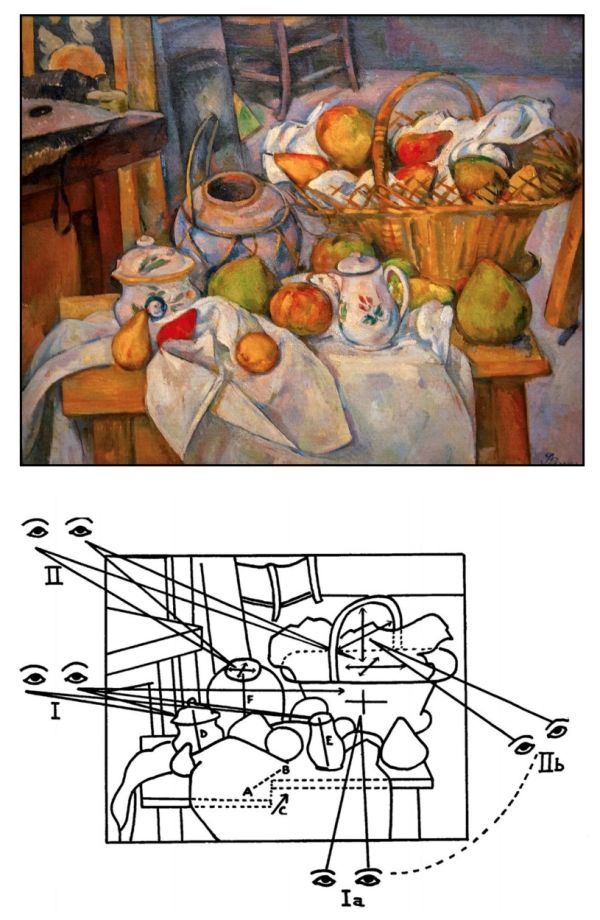
4 - Cezanne combined objects seen from different vantage points in a single image (diagram © Erle Loran)
Cezanne's work inspired Picasso to take the deconstruction of linear perspective a step further. While Cezanne integrated multiple vantage points of objects in a single image, Picasso integrated multiple vantage points of an object in a single form. This resulted in the “distorted” portraits that became a hallmark of Cubism.

5 - Picasso combined different vantage points of objects in a single form
Like Cezanne before him, Picasso offered no explanation or theory for his pictorial experiments and left it to the critics to interpret his work. Prominent art critic Guillaume Apollinaire praised Cubism for its attempt “to get rid of perspective, of that miserable tricky perspective, of that fourth dimension in reverse, of that infallible device for making all things shrink [i.e. the vanishing point].”
In his essay The Cubist Painters (Les Peintres Cubistes), published in 1913, Apollinaire was the first to make a connection between the fragmented, multi-perspective nature of Cubist art and Einstein's theory of relativity and the so-called fourth dimension. His interpretation was taken over by other writers, including Gebser.
Gebser, who was part of Picasso's circle in Paris, saw Picasso's work as an expression of the fourth dimension, a notion popularized by mathematician Charles Howard Hinton in the late 19th century. Hinton, who also coined the term hyperspace, argued the fourth dimension “exists as a transcendental yet material space accessible to both the mind and the physical senses.”
After Einstein's Theory of Relativity, the term space-time largely replaced the notion of the fourth dimension, but Gebser stuck with the latter. He linked it to different structures in the evolution of human consciousness and a new way of understanding the world. He wrote:
But whereas the preoccupation of the Early Renaissance was with the concretion of space, our epoch is concerned with the concretion of time. And our fundamental point of departure, the attempt to concretize time and thus realize and become conscious of the fourth dimension, furnishes a means whereby we may gain an all-encompassing perception and knowledge of our epoch.
Architects to the rescue
In the second decade of the 20th century, the modernist revolution in architecture gathered steam. Artist-cum-architects from the Russian Supremacist movement, the German Bauhaus, and the Dutch De Stijl movement pioneered the development of a “machine aesthetic” which would lead them to embrace axonometry.

6 - Axonometric drawing of De Stijl architecture, Gerrit Rietveld (drawing © Diego Inzunza)
The modernist architects were unfamiliar with the Chinese origin of axonometry but they found it ideal for their rendering their “blueprints” of a modern architecture suitable for the industrial era. In an exhibit in Paris in 1924, De Stijl's co-founder Theo van Doesburg used axonometry for his proto-modern architecture. The exhibit drew international attention and led to the European embrace of axonometry.
Today, axonometry is used by every architect, designer, and engineer the world over. It is a key feature of computer-aided design systems. All structures of any consequence built in the world today start their lives as axonometry projections.
Given that Gebser was intimately familiar with the developments in art and science, it is remarkable that he was unfamiliar with or didn't recognize the significance of axonometry. Alas, he was not alone. It is possible to read 100 accounts of the modernist revolution without finding a single reference to axonometry.
Axonometry, known in Chinese as dengjiao toushi (“equal-angle see-though”) emerged from Chinese architecture and became part of Chinese painting in the 10th century. Chinese artists used the device in the so-called hand scroll painting, a pictorial format that takes the viewer through a pictorial narrative in space and time.
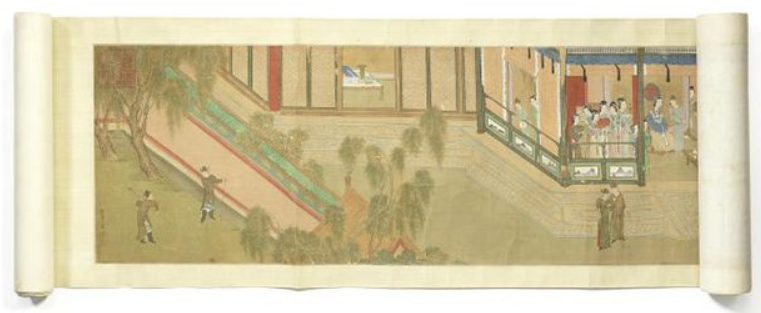
7 - Chinese hand scroll, a pictorial synthesis of space and time
Rather than a sequence of separate images, the hand scroll is a continuous, seamless image. It explains why the Chinese artists used axonometry. Unlike linear perspective, axonometry does not assume a fixed vantage point. The Japanese Ukio-e masters became masters in exploiting the graphical possibilities of axonometry.
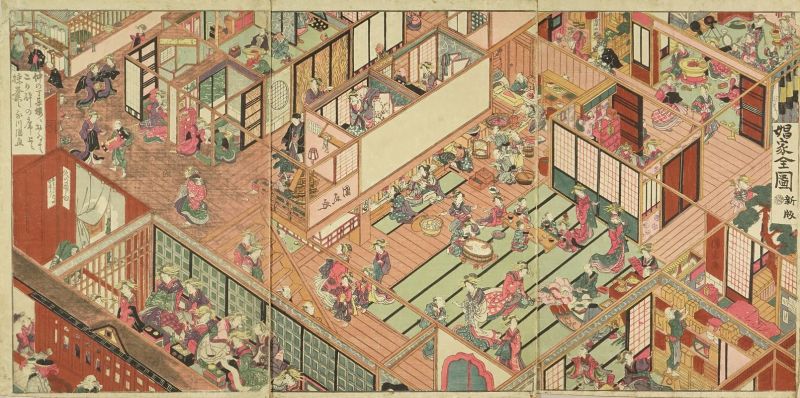
8 - Japanese print in axonometric projection
Axonometry was introduced to the West in the 18th century, when Jesuits returning from China brought illustrations featuring axonometry back to Europe. The device was used for technical drawings, such as ballistic calculations, but its aesthetic quality was not recognized until the 1920s, when the Bauhaus and De Stijl embraced axonometry.
In 1932, the American architect Claude Bradgon, in his book The Frozen Fountain, gave the first description of the aesthetic quality of axonometry. Bragdon seemed to anticipate Gebser's notion of the “aperspectival” - the view in which the observer sees things are they are rather than as they appear to our eyes. Referring to the isometric version of axonometry, Bragdon wrote:
Isometric perspective, less faithful to appearance, is more faithful to fact; it shows things nearly as they are known to the mind. Parallel lines are really parallel; there is no far and no near, the size of everything remains constant because all things are represented as being the same distance away and the eye of the spectator everywhere at once. When we imagine a thing, or strive to visualize it in the mind or memory, we do it in this way, without the distortion of ordinary [sic] perspective. Isometric perspective is therefore more intellectual, more archetypal, it more truly renders the mental image — the thing seen by the mind's eye.
Long before Einstein integrated space and time in physics, the Chinese had integrated space and time aesthetically. Axonometry has roots in China's ancient yin-yang classification system. The early Chinese spoke of Yu, “space-universe,” and Zhou, “time-universe.” A little more than 2000 years ago, these words began to appear together: Yu-Zhou. Yu is yin, and Zhou is yang. Yu-Zhou is the conceptual basis of axonometry.
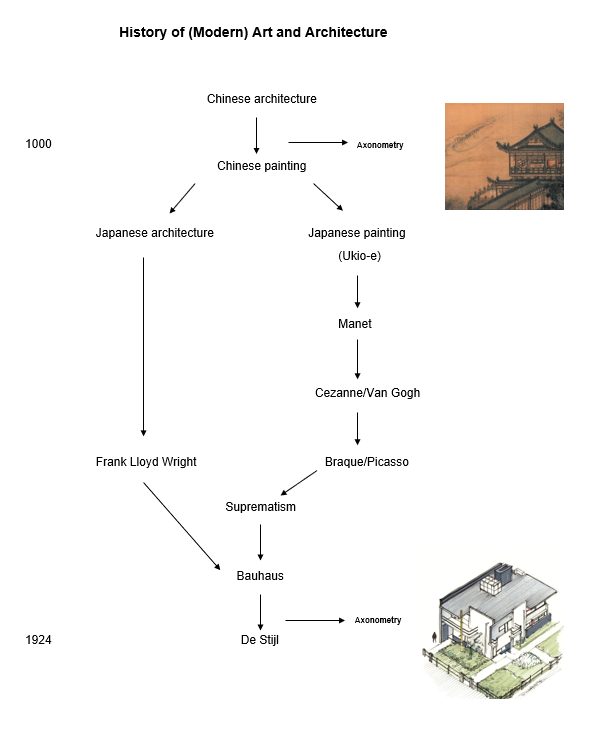
9 - Origin of axonometry and its development as a global standard
The notion of space plays a key role in Gebser's work, but he is not always clear on its meaning. Space means different things to astronomers, architects, and quantum physicists. Moreover, Gebser's claim that the invention of linear perspective led to an increasing awareness of space is questionable at best.
European philosophers like Immanuel Kant theorized about space in the 18th century, but up to the early 20th century, space was rarely discussed in aesthetic terms. Modernist architects rather than painters took the lead in defining space. They discussed space as if they had discovered a new medium.
In 1912, the noted architectural theorist Rudolph Schindler wrote: “The architect has finally discovered the medium of his art: SPACE.” De Stijl co-founder Theo van Doesburg wrote in 1916: “The foundation of buildings is space. Hence the visual consciousness of the architect ought to be based on the Idea of Space.”
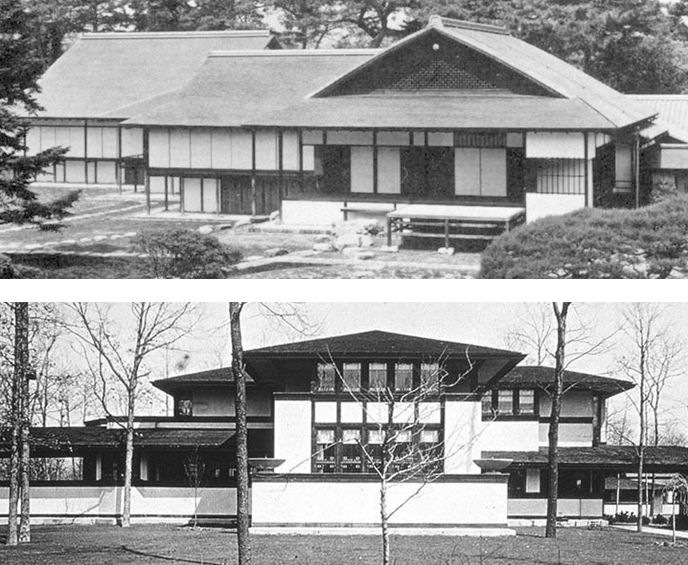
10 - Japan's Katsura Palace and Frank Lloyd Wright's proto-modern architecture
Frank Lloyd Wright, the grandfather of modern architecture, was strongly influenced by Japanese architecture, which he recognizes as an art of space. His apprentice Edgar Tafel recalled Wright saying:
The Japanese house, with its sliding screens, gives a unique sense of movable space. With each rearrangement of the screens, we become aware of the ‘shape of the space’, or, like the Japanese print, of merely an interruption of space, a moment in space. Another dimension, he called it. Imagine the surprise he experienced when, by chance, he came across a quotation from Laozi [Lao Tzu]: ‘The reality of the building does not consist in the four walls and the roof but in the space within to be lived in.’
The latter is a liberal interpretation of Lao Tzu's comment on space, but it captures the essence of the idea. Lao Tzu said: “Though clay is used to form a vase, in what there isn't lies its use. Thus, by using what there is, one uses what there isn't.”
Integral perspectives
Gebser was one of the many influences on Ken Wilber, the American philosopher who developed a framework that integrates philosophy, physics, psychology, and spirituality. Wilber's theory complemented Spiral Dynamics (SD), a model of the evolutionary development of individuals, organizations, and societies. The two models are integrated in SDi (Spiral Dynamics Integral).
Like Gebser, Wilber identified distinct stages in the evolution of human consciousness. While Gebser identified five stages or structures, Wilber ultimately identified eleven different stages, including the Gebser-inspired “integral-aperspectival” stage.
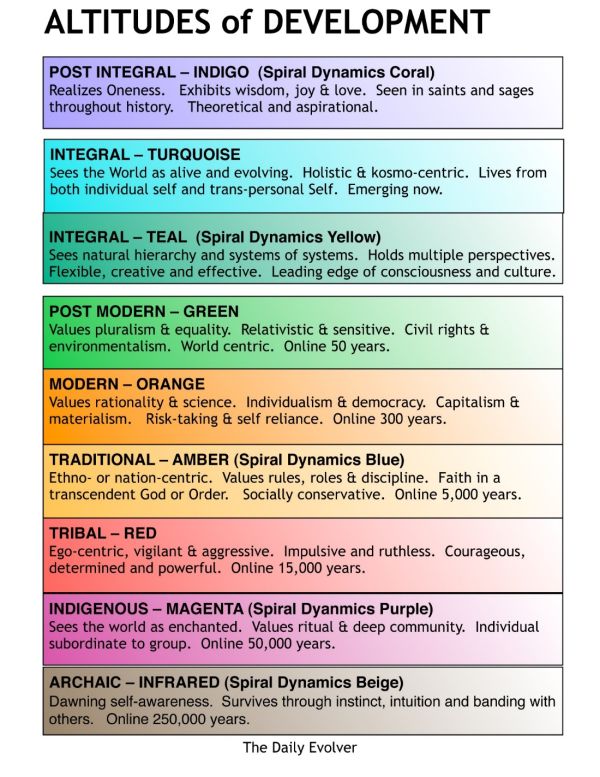
11 - The nine stages of consciousness in the Spiral Dynamics Integral model
Wilber's model has been widely applied in different disciplines and has influenced many in the fields of psychology, sociology, and behavioral science. But like Gebser's model, it cannot be mapped to non-Western cultures without some reservation.
The structures and stages identified by Gebser and Wilber ostensibly apply to both individuals and entire countries and cultures. But when we look at the attributes given to the stages, they reflect a Western worldview and value system. In the SDi model, the Rational Self is associated with capitalist democracies and the Sensitive Self is associated with social democracies.
Politically and socially, the SDi model would classify China and most other countries without representative democracy as Rule/Role Self. China is commonly seen as fitting the profile of an authoritarian country. But China also has attributes associated with the Sensitive Self, among them consensus and an emphasis on group needs. They are qualities we typically do not associate with representative democracies like the US or India.
A Chinese version of the Integral model would have a different value system and a different emphasis. Ethics and reciprocity would be high on the list. They reflect China's Confucian roots. Confucianism encourages personal development, but individual growth does not relieve the individual from reciprocity, which is an ethical dimension of yin and yang.
Chinese ethics is unique because of its close relationship with aesthetics. It is rooted in a simple, humanistic truth: Whatever is beautiful, graceful, or harmonious cannot be bad.
The American art historian George Rowley was the first scholar to note the importance of aesthetics in the Chinese worldview. In his magnificent book Principles of Chinese Painting, Rowley compared the world views of India, Europe, and China. He wrote:
Each culture seems to have had a special bent. Reason and corporeal beauty were the fortes of Greek art. The Hindus had such an urge toward religion that the religious symbol vies with the natural sensuousness of their tropical forms.
Everywhere in the art of Western Europe the importance of the individual person and his ingenuity in handling material and technical problems were paramount. In each case dominant cultural traits determined the character of the art.
What was dominant in China? Here we meet a unique and surprising answer. The Chinese way of looking at life was not primarily through religion, or philosophy, or science, but through art. All their other activities seem to have been colored by their artistic sensitivity.
Instead of religion, the Chinese preferred the art of living in the world; instead of rationalization, they indulged in poetic and imaginative thinking; and instead of science, they pursued the fantasies of astrology, alchemy, geomancy and fortune-telling.
If these observations seem to be unduly imaginative, consider the painting in its own right. Chinese painting never became the handmade of religion except during the influence of Buddhism, a foreign religion; it avoided the pitfalls of reason, whether the Greek beauty of mathematical proportions or the modern limitations of pure abstracts; it escaped the glorification of the personal ego as exemplified by expressionism, romanticism, or surrealism…
Socio-cultural dimension
Jean Gebser enriched the debate on the evolution of human consciousness and he inspired others to explore this complex issue. But his failure to recognize the East Asian role in the modernist revolution makes his account of art history incomplete. This in turn led him to overlook the wider socio-cultural dimension of the modernist revolution.
We saw that China, through the mediation of Japan, played a seminal role in the revolution in Western art and architecture. The Japanese print inspired European artists to move away from optical representation. As a result, the modern painting was no longer a copy of optical, material reality. It became a reality “an sich” (a thing in itself), most famously and exemplary in Van Gogh's Sunflowers and Starry Night.
Similarly, Frank Lloyd Wright, inspired by Japanese architecture, moved Western architecture away from its sculptural aesthetics toward an architecture based on space. Wright's Japan-inspired architecture became a “blueprint” for a machine aesthetic based on “structural” rather than on sculptural principles.
Van Gogh and Frank Lloyd Wright were among the few modernists to acknowledge Japan's role in the modernist revolution. Van Gogh copied several Japanese prints in oil and canvas and told his sister to look at Japanese prints if she wanted to understand the new direction in European art. Wright argued that the Japanese print was “at the root of all this so-called modernism. Strangely unnoticed, uncredited.”
De Stijl co-founder Theo Van Doesburg, who popularized axonometry in the West, understood the implications of the Eastern role in the modernist revolution on yet another level. In his paper The New Style in Art (1916), Van Doesburg referred to the “immateriality” of modern art, writing:
In fact, what is happening is nothing but the shifting of an Eastern notion of Art into a Western notion. Today this is possible, now that materialism has annulled itself.
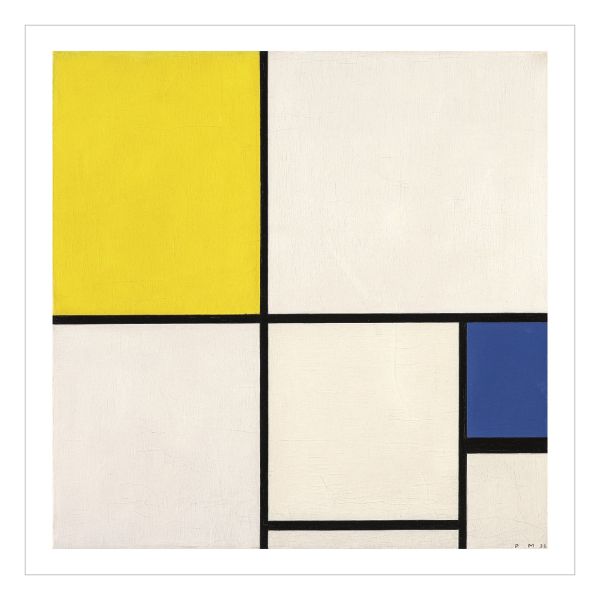
12 - “Immaterial art” from De Stijl's Piet Mondriaan; a dynamic equilibrium
More than any other modernist, Van Doesburg understood the zeitgeist of the era. This is most apparent in his 1922 paper entitled The Will to Style: The New Form-Expression of Life, Art, and Technology, arguably the most insightful document of the modernist revolution.
Van Doesburg argued the problems facing Europe in the aftermath of WWI required a collective response. It was the task of artists, architects, and designers to develop a human-centric machine aesthetics that could be used to build houses, schools, hospitals and other infrastructure using industrial methods.
In The Will to Style, Van Doesburg described the broader cultural struggle facing Europe and how it should be approached. He saw the modernist revolution as part of a larger socio-cultural revolution to find a new equilibrium. While Van Doesburg never referred to China, the method he proposed echoed the Chinese principle of reconciling yin-yang opposites. He wrote:
What then is the nature of this struggle which is not only ongoing in art, science, philosophy, and religion but which is also manifested in our daily life as a struggle for a spiritual and material existence? Every work of art, be it contemporary or from the past, offers its answer.
This struggle, which is rooted in the structure of life, is a struggle of two polar opposite forces, which we may call Nature and Spirit, or the female and the male principle, the negative and the positive, the static and the dynamic, the horizontal and the vertical—they are the unchanging elements on which the contradiction of our life is founded, and which manifest themselves in dynamic change.
The end of this struggle, the leveling of these extremes, the neutralizing of this polarity, is the content of life and is also the basic object of art. This balancing, which is expressed in art as harmony or vital tranquility, is the criterion for the essential meaning of any work of art.
Van Doesburg's views are as topical today as they were 100 years ago. Our time calls for reconciling opposites in all their manifestations: idealism and realism, human and nature, rights and obligations; individualism and collectivism, freedom and responsibility, competition and collaboration. Reconciling opposites reduces frictional loss for all.
Conclusion
The question remains why Gebser, like Wilber, overlooked the fact that China had developed axonometry, a projection system that conceptually anticipated the “aperspectival”. A possible explanation is Gebser's focus on Picasso, whose name he mentions more than any other artist.
Gebser used the word perspective both literally and figuratively. The word perspective has its roots in the Latin perspectus, the past particle of which is perspicere (inspect, look through, look closely at). Picasso's incorporation of multiple “perspectives” in his work could be the germinating idea of Gebser's notion of the aperspectival.
Gebser equated the aperspectival with the Fourth Dimension, a term that appears nearly 200 times in his book. Remarkably, he does not mention the name of Charles Howard Hinton, the 19th-century mathematician who introduced the concept of the fourth dimension in his 1880 book A New Era of Thought.
Hinton, also a writer of science fiction, discussed the idea of “higher-dimensional spaces” beyond the usual three-dimensional space. His writings on the fourth dimension were influential in mathematical and philosophical circles. Hinton invented the so-called tesseract to visualize the fourth dimension. Notably, the tesseract is based on an axonometric projection.
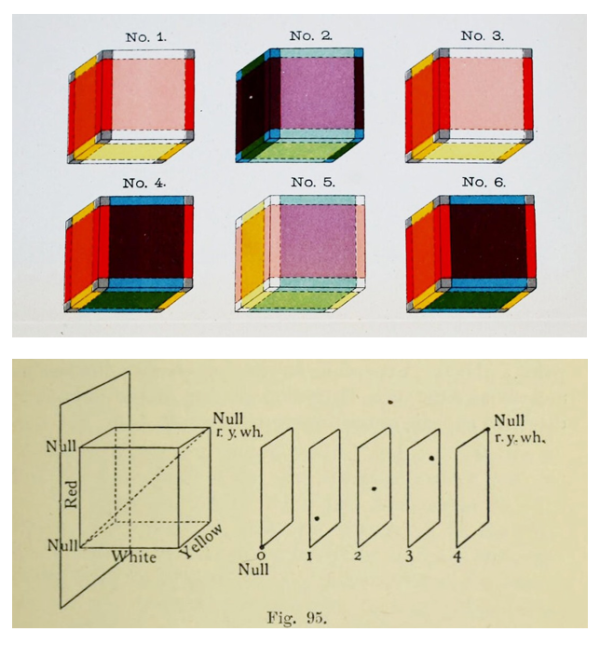
13 - Hinton's notion of the fourth dimension, illustrated with a tesseract
Ken Wilber, who adopted Gebser's notion of the aperspectival, also used the term perspective in a literal and figurative sense. His concept of the “aperspectival” refers to a way of understanding reality that is not limited by a single point of view, belief system, or cultural context. It implies a more comprehensive or holistic perspective that integrates multiple viewpoints and perspectives.
It is not surprising that Wilber overlooked axonometry. He was more concerned with psychology and his views of art, like Gebser's, were largely informed by the Western intellectual tradition.
More difficult to explain is why Frank Lloyd Wright initially failed to recognize axonometry. Wright had a large collection of Japanese prints, many of which featured axonometric projections. He visited Japan on several occasions and worked in Japan. He built one of Japan's first “Western” hotels.
Moreover, axonometry was ideal for Wright's innovative architecture. Traditional Western architecture was designed from the outside inward. Technical drawings consisted of two parts: the elevation (the façade) and the floor plan. Wright designed homes from the inside out. He started with the floor plan (the interior space), which determined the shape of the house.
An axonometric drawing can capture both elevation and the floor plan in a single drawing and true to scale. A conceptual drawing can be used to produce a technical drawing.
Wright also should have been familiar with William Farish, the British scientist who in the early 19th century invented isometry, a technical projection system “of equal measures” that gave axonometry a geometrical basis. Farish responded to the Industrial Revolution, which required a projection system that provided exact measurement, without the optical distortion of linear perspective.
In isometric projections, the height, width, and depth of objects are projected as they are, rather than as they appear to the eye. Moving the axis of isometry by 45 degrees results in axonometric projection (see the tesseract above).
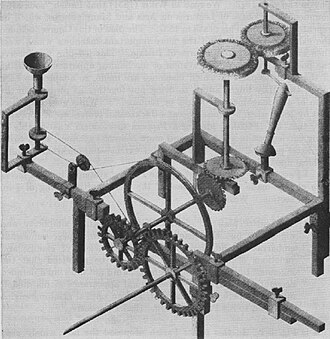
14 - Isometric projection from William Farish
By the early 20th century, axonometry had become part of the curriculum of most architectural training courses in Europe. Dutch architect Cornelis van Eesteren, who produced the axonometric drawings for the 1924 De Stijl exhibit in Paris, confirmed to this author that he learned about axonometry during his training as an architect. Van Eesteren, too, was unfamiliar with its Chinese origin.
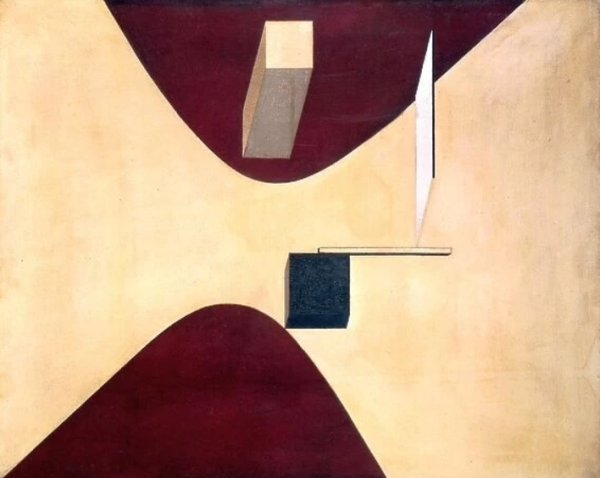
15 - Axonometry in “Proun” series of Russian artist El Lissitsky
While axonometry resembles Gebser's aperspectival notion, it is not “perspectival” in Gebser's sense of the word. Rather, it breaks through the vanishing point into boundless space. As George Rowley explained,
We [the West] restricted space to a single vista as though seen through an open door; they [the Chinese] suggested the unlimited space of nature as though they had stepped through that door and had known the breath-taking experience of space extending in every direction and infinitely into the sky.